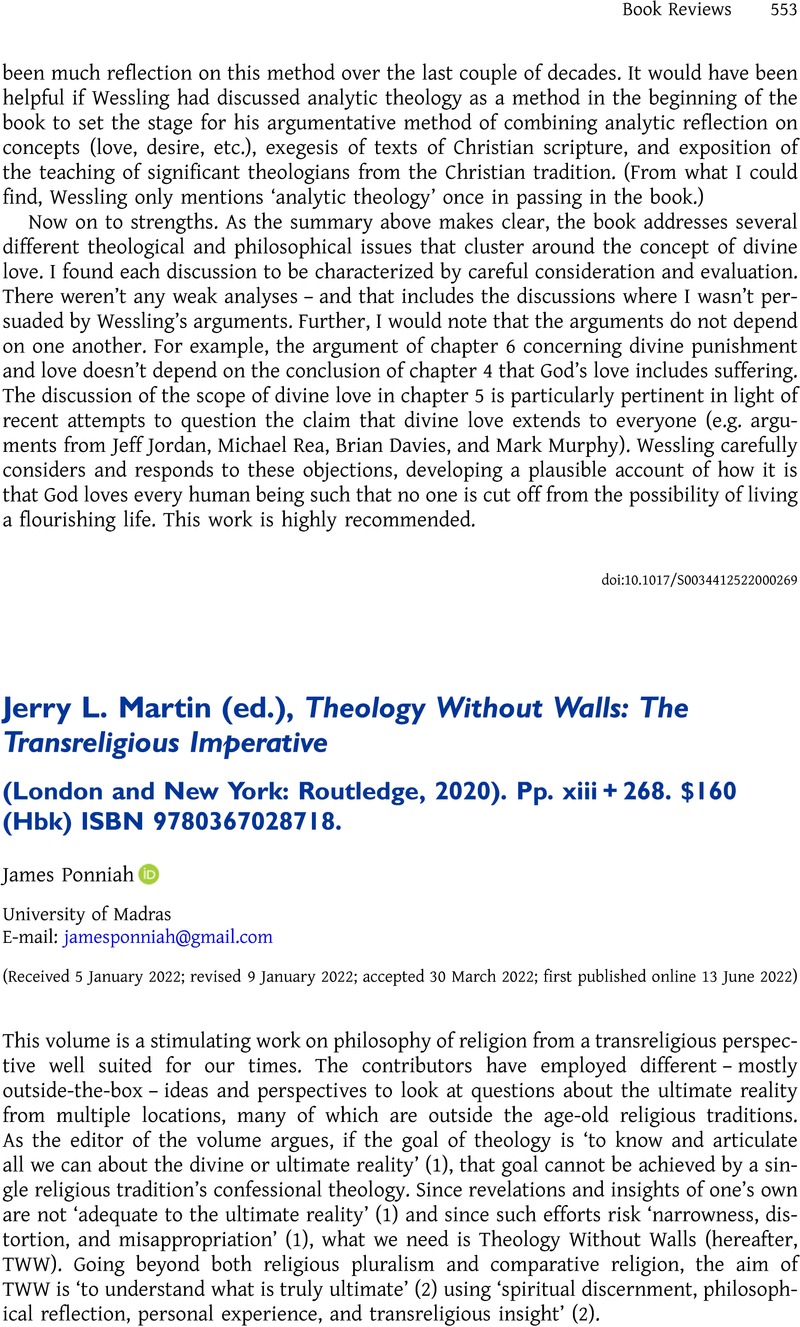No CrossRef data available.
Article contents
Jerry L. Martin (ed.), Theology Without Walls: The Transreligious Imperative (London and New York: Routledge, 2020). Pp. xiii + 268. $160 (Hbk) ISBN 9780367028718.
Review products
Jerry L. Martin (ed.), Theology Without Walls: The Transreligious Imperative (London and New York: Routledge, 2020). Pp. xiii + 268. $160 (Hbk) ISBN 9780367028718.
Published online by Cambridge University Press: 13 June 2022
Abstract
An abstract is not available for this content so a preview has been provided. Please use the Get access link above for information on how to access this content.

- Type
- Book Review
- Information
- Religious Studies , Volume 59 , Special Issue 3: Normative Appraisals of Faith in God , September 2023 , pp. 553 - 556
- Copyright
- Copyright © The Author(s), 2022. Published by Cambridge University Press



